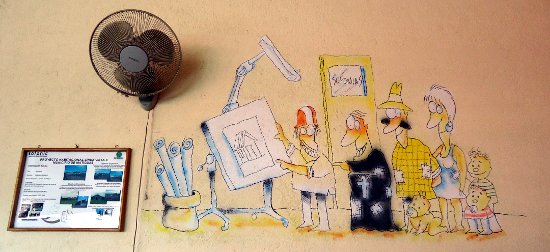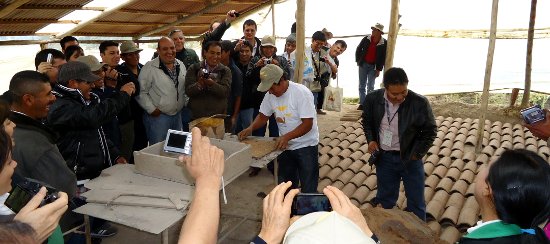Means and media: from mule trails to the electronic highway


There are different means to be used for different situations, target groups and types of knowledge. In this realm EcoSur includes the face-to-face contacts of onsite visits, courses and seminars, as well as published material and internet connections. In the southern hemisphere direct personal contact has been the predominant means of communication, but requires tremendous investments of time, energy and resources. At one point in the process of sharing knowledge it is essential, but other or accompanying means must be sought.
Excerpt from an article by Kathryn Pozak in Basin News back in June 2003
Right at the beginning EcoSur recognized this and published a newsletter that it sent to all tile producers. At that time it was a few dozen, but as the number grew to hundreds in Latin America, circulation also grew.
Over the years, a compact group of experts has emerged that has become the key unit or focus of sharing knowledge. These experts can manage the gamut of means of communication, or as the EcoSur caricaturist conveys, they must be able to mount mules with a computer in their hands. The story of knowledge sharing in the EcoSur Network cannot be separated from the story of modern communication.
For the EcoSur Network, the decade of the nineties was revolutionary.
Postal services, telephones, typewriters and the fax
The first experience in knowledge sharing reflected the state of communication at that time (1991), a typewritten newsletter that was simply copied and sent to all tile producers, reliant upon traditional postal services that were not always reliable. As courier services emerged, it was possible to send the newsletter in bulk to a particular country and the local associates would ensure that it arrived at the outlying producers. Not all had postal services, forget about telephones, and direct delivery was often carried out through field representatives of friendly organizations. Gathering, publishing and delivery of information was indeed a cumbersome task
Among those with telephones and later on fax machines, faster contact was possible. While international communication among Network associates became possible through these services, costs could be substantial.

Transportation
Transportation is important for the activities that involve face-to-face contact, be it four-wheel drive vehicles to conquer the rough roads, or mules to walks the trails, even airplanes where international travel is required, and these can be expensive. Such means of sharing knowledge can only be sporadic and have a limited life expectancy as they are usually dependent upon outside financing. Thus, the EcoSur approach to use a variety of means to "keep in touch" is a way of circumventing this difficulty over the long term.
Computers
In the early nineties computers entered the field and everybody could "type" so to speak, then came laptops and notebooks. Acquisition of this important tool was an apparently costly endeavor. However, as one EcoSur associate notes: "Is it a cost or is it an investment?" EcoSur viewed it as an investment in the future and found the means to ensure that the key people had this empowering tool. New possibilities opened up and with the introduction of e-mail and a website, and computers became indispensable for sharing knowledge.
Email
The advent of e-mail was a breakthrough that allowed rapid communication among Network associates, In 1994 at an EcoSur MCR seminar in Guatemala a local computer specialist explained the workings of e-mail to representatives from about ten countries. Little by little e-mail became THE means of communication, cheaper than telephone calls, but there remained the hinderness of unreliable telephone connections. While it was still some time before documents could be attached and transmitted in seconds, EcoSur was on its way to becoming an electronic Network. Toward the end of the nineties EcoSur was sharing information at decision-making level and documents were being transmitted throughout Latin America, Asia and Africa.
World Wide Web
Then came the World Wide Web. EcoSur recognized its potential for sharing knowledge and embraced it with gusto. In 1997 it launched a simple website that has constantly improved in march with technological advances. Since 2001 the bilingual EcoSur website is the Network´s center of information, the source from which all published material would flow. In this respect, EcoSur continues to be a trailblazer. As many other organizations simply hang already printed material into their sites, the lively EcoSur website reverses the process. It keeps people throughout the world up to date about events, news and information concerning the ecologically and economically sustainable habitat, something of a monthly magazine. Some of the material on the website may later be published in print form, such as the periodical bulletins in Spanish and English. But the website remains THE source of information. Recent redesign of the website to manage the existing information and future inputs in a more efficient and organized manner continues the process of improvement.
This fountain of knowledge is shared with whoever can and cares to access it. Sharing does not have a price!



